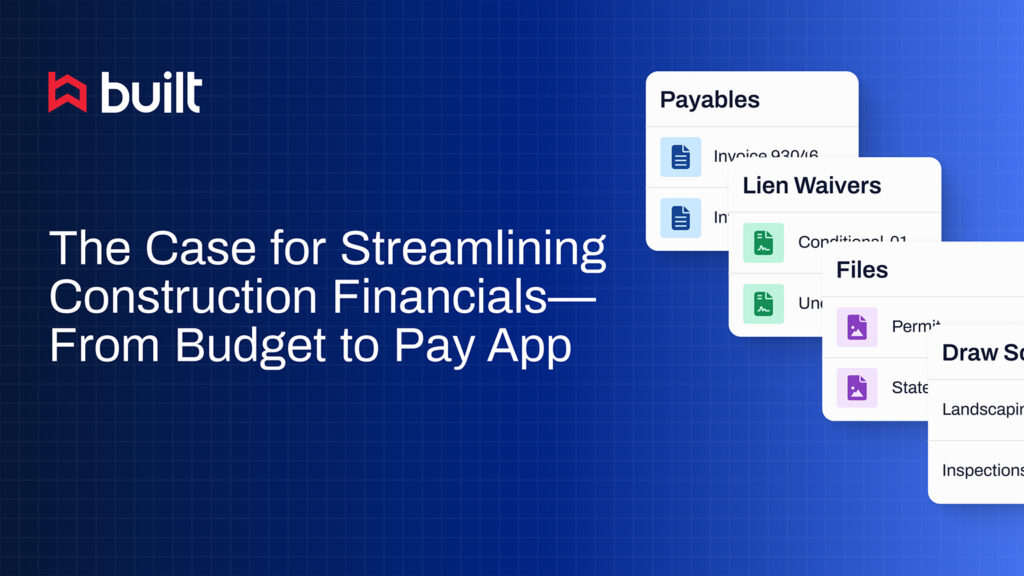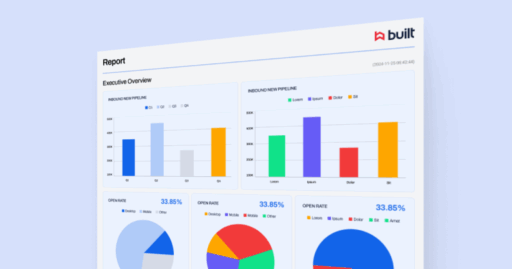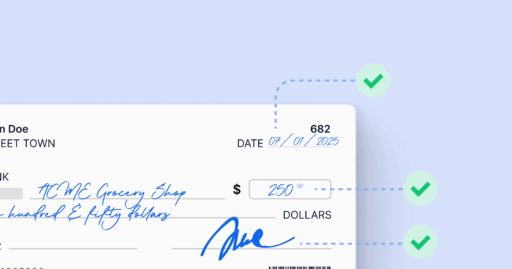
How the Construction Industry Is Handling the Housing Supply Shortage

Between interest rate hikes, recent peaks in the home price indices, construction materials supply chain issues, and a housing supply shortage, new home construction is a hot topic. The industry has seen unprecedented changes over the last few years, and many construction businesses are seeking an edge by looking for trends in the marketplace. These companies want to know what’s going on, what they can expect, and how they can position themselves to succeed in the near future. Let’s take a look.
Current construction industry challenges
The housing supply shortage is not the only market condition that has the construction industry navigating a gauntlet of challenges. High demand coupled with changes in lending practices and fluctuations in materials costs and availability means backlogs are full, but timelines are challenging.
Borrowing
Borrowing has become increasingly difficult. Lenders are scrutinizing applications more closely and delving more deeply into an applicant’s credit and project portfolio. While in the past an applicant’s standing with the bank might carry more weight, any signs of credit distress are likely to be financial red flags for current projects and new credit requests.
Materials costs
Materials costs are anything but stable. The prices of materials like concrete, metal, and asphalt shingles are still considerably higher than they were two years ago. However, the cost of lumber appears to be stabilizing near where it was roughly two years ago—at less than one-third of its peak. There are still supply chain shortages to deal with, though, as these materials aren’t nearly as available as they were.
Interest rates and timelines
As interest rates climb to combat inflation, project owners and prospective customers want to start and finish projects sooner to combat uncertainty. Balancing these tighter timelines with supply chain issues and stringent lending has become a significant challenge.
The construction industry’s response
Moving forward despite the challenges has required contractors and builders to change the ways they approach borrowing, new projects, and even materials sourcing. This is good news for the housing market, given that there is still a multimillion-unit deficit between the demand for homes and the supply nationwide.
The biggest challenges
Two of the biggest factors affecting the industry are construction material shortages and price volatility. To combat these challenges, many contractors are beginning to order materials sooner than ever before. They’re willing to pay the costs associated with materials storage to ensure they have them when they need them, rather than dealing with 18-month lead times. This trend is likely to continue as long as materials are difficult to obtain.
Project types
The types of projects contractors are undertaking may be changing. Residential housing is still hot, but not necessarily in the sense of the traditional single-family home.
Large projects geared toward solving low- to middle-income housing supply shortages are becoming more prevalent. These projects are attracting the attention of commercial construction companies since they can be less difficult to secure financing for than projects like retail or hospitality. This shift potentially creates a brighter outlook moving forward.
Realigning expectations
Many of the companies growing in this market are also taking a more active role in aligning their customer’s goals with more realistic expectations. While interest rate and materials volatility are legitimate concerns, expecting a project to wrap before being affected by outside factors isn’t realistic in this market. Customers need to understand this from the start, and effective communication is key.
Taking advantage of trends
In order for builders to position themselves to take advantage of the coming trends, they should shift the projects they take on, present themselves and their projects in the best light to lenders, and trust a construction finance management system to handle both.
Projects worth considering
Commercial builders can grow by focusing on projects in trending areas. Obviously, helping solve the housing supply shortage is important, but other projects can be just as desirable:
- Digital infrastructure, such as towers and data centers, is likely to continue growing.
- The healthcare industry, which is focusing on expanding outpatient care and bringing older facilities up to date, will be in need of builders.
- As brick-and-mortar retail fades, online shopping is continuing to grow. Companies will look to build more fulfillment and distribution centers, as well as warehouses to meet the requirements of faster shipping.
Not only are these projects likely to grow in size and number, but banks may be more willing to issue loans for such projects. Lenders may see these industries and the loans associated with them as less risky, possibly affording some leniency when determining which loans to approve or deny. This factor alone could be critical to builders’ success moving forward.
Proper presentation
It’s also critical that builders learn to present themselves in the best possible light when it comes to applying for loans. They’ll want to keep projects free of liens and ensure that all contractors and subcontractors are getting paid on time. Also, keeping clear and accurate reports on the financial health and progress of their projects is important. The reports give a lender an inside look at their current loans, allowing them to determine the risk (or lack thereof) involved with moving forward with that contractor.
Built can help
All this might sound like a tall order, but Built’s construction finance management system can help. By utilizing Built’s software, contractors can keep track of lien waivers and payments to ensure everyone is getting paid in a timely and streamlined fashion.
Compliance tracking helps Built customers stay on top of their subcontractors to ensure they don’t sidetrack the job on an oversight. Built can also integrate with existing construction management software to enable users to produce accurate job costing reports.
These items, along with careful credit management, can help Built customers come out on top of the lending process, even when facing today’s construction lending scrutiny.
Related Posts


The Case for Streamlining Construction Financials—From Budget to Pay App







